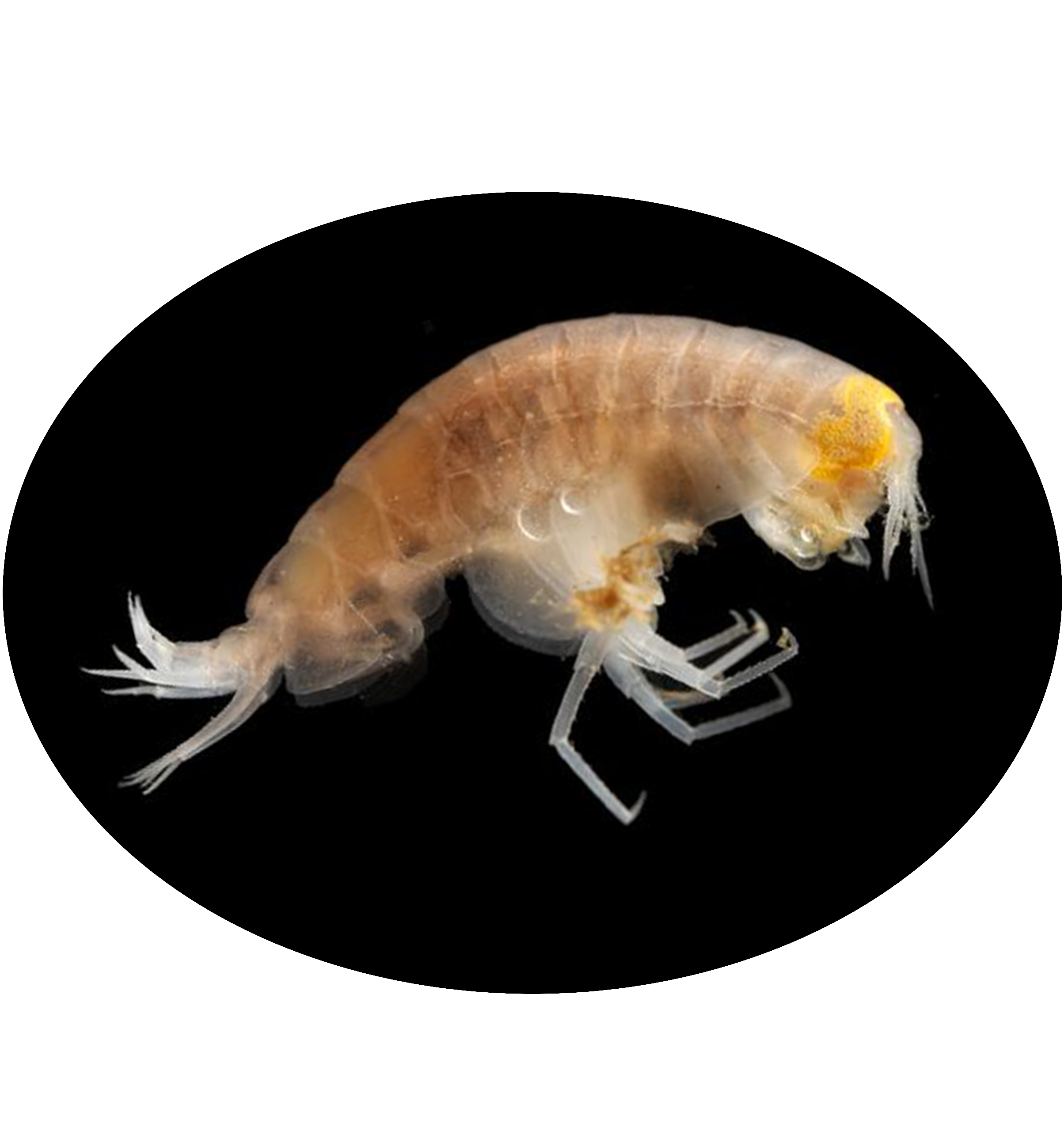
Hirondellea gigas is a species of amphipod crustacean found in the hadal zone of the Pacific Ocean, particularly in the Mariana Trench. It is adapted to extreme deep-sea environments, living at depths exceeding 10,000 meters where pressures are immense and temperatures are near freezing. This species feeds on organic matter that sinks to the ocean floor, playing a crucial role in the deep-sea ecosystem as a scavenger. Its unique adaptations, such as a lightweight exoskeleton and specialized enzymes, allow it to survive and thrive in one of the most extreme habitats on Earth.
Animalia (Kingdom); Arthropoda (Phylum); Crustacea (Subphylum); Multicrustacea (Superclass); Malacostraca (Class); Eumalacostraca (Subclass); Peracarida (Superorder); Amphipoda (Order); Amphilochidea (Suborder); Lysianassida (Infraorder); Lysianassidira (Parvorder); Lysianassoidea (Superfamily); Hirondelleidae (Family); Hirondellea (Genus); Hirondellea gigas (Species)
Tetronychia gigas Birstein & M. Vinogradov, 1955
Philippine Trench from Philippine Sea, Mariana Trench from North Pacific Ocean and Kuril-Kamchatka Trench
| Species | Phylum | Common Name | Ecosystem | Depth | Habitat | NCBI Taxonomy ID |
|---|---|---|---|---|---|---|
| Hirondellea gigas | Arthropoda | - | Deep sea | 6,800-11,000 | Mariana Trench in the northwestern Pacific Ocean | 1518452 |
| Genome Assembly | Genome Size | Assembly level | Released year | WGS accession | Submitter | BioProject | BUSCO completeness (%) | Scaffold/Contig N50 (kb) | GC content (%) | Repeat Rate (%) | Gene Number |
|---|---|---|---|---|---|---|---|---|---|---|---|
| - | 13.92Gb | Chromosome | 2025 | CNA0142381 | - | CNP0005374 | 89.34 | 458,700/466.1 | 38.8 | 72.75 | 27,881 |
| Title | Journal | Pubmed ID |
|---|---|---|
| The amphipod genome reveals population dynamics and adaptations to hadal environment | Cell | 40054448 |
| Gene ID | Description |
|---|---|
| Hgig_17347 | TRANSPOSABLE ELEMENT-RELATED |
| Hgig_17348 | |
| Hgig_17349 | |
| Hgig_17350 | |
| Hgig_17351 | SIDESTEP PROTEIN |
| Hgig_17352 | FILAMIN/GPBP-INTERACTING PROTEIN |
| Hgig_17353 | |
| Hgig_17354 | FILAMIN/GPBP-INTERACTING PROTEIN |
| Hgig_17355 | SIDESTEP PROTEIN |
| Hgig_17356 | SIDESTEP PROTEIN |
| Hgig_17357 | SIDESTEP PROTEIN |
| Hgig_17358 | SIDESTEP PROTEIN |
| Hgig_17359 | |
| Hgig_17360 | |
| Hgig_17361 | |
| Hgig_17362 | |
| Hgig_17363 | MEMBRALIN/KINETOCHORE PROTEIN NUF2 |
| Hgig_17364 | |
| Hgig_17365 | UNCHARACTERIZED |
| Hgig_17366 | NUCLEAR PORE COMPLEX PROTEIN NUP93 NUCLEOPORIN NUP93 DEAD EYE PROTEIN |
| Hgig_17367 | |
| Hgig_17368 | |
| Hgig_17369 | LD44813P |
| Hgig_17370 | NEUROLIGIN |
| Hgig_17371 | |
| Hgig_17372 | GNAT FAMILY N-ACETYLTRANSFERASE |
| Hgig_17373 | DYNAMIN |
| Hgig_17374 | LD24308P |
| Hgig_17375 | PHOSPHATIDYLINOSITOL GLYCAN-RELATED |
| Hgig_17376 | AAA DOMAIN-CONTAINING |
| Hgig_17377 | |
| Hgig_17378 | |
| Hgig_17379 | N-ACETYLATED-ALPHA-LINKED ACIDIC DIPEPTIDASE |
| Hgig_17380 | BASIC HELIX-LOOP-HELIX TRANSCRIPTION FACTOR, TWIST |
| Hgig_17381 | BASIC HELIX-LOOP-HELIX TRANSCRIPTION FACTOR, TWIST |
| Hgig_17382 | |
| Hgig_17383 | GRAM DOMAIN-CONTAINING PROTEIN 4 |
| Hgig_17384 | DEFECTIVE PROBOSCIS EXTENSION RESPONSE DPR -RELATED |
| Hgig_17385 | CTX-RELATED TYPE I TRANSMEMBRANE PROTEIN |
| Hgig_17386 | |
| Hgig_17387 | |
| Hgig_17388 | |
| Hgig_17389 | |
| Hgig_17390 | |
| Hgig_17391 | |
| Hgig_17392 | |
| Hgig_17393 | |
| Hgig_17394 | |
| Hgig_17395 | |
| Hgig_17396 | MITOCHONDRIAL IMPORT INNER MEMBRANE TRANSLOCASE SUBUNIT TIM-17 |

